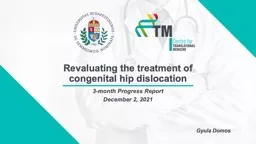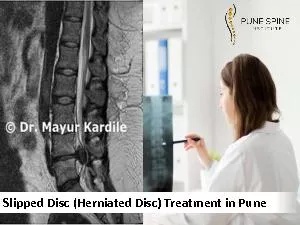PPT-Revaluating the treatment
Author : olivia | Published Date : 2022-05-17
of congenital hip dislocation 3month Progress Report December 2 2021 Gyula Domos About the lecturer Gyula Domos PhD Student Department Department of
Presentation Embed Code
Download Presentation
Download Presentation The PPT/PDF document "Revaluating the treatment" is the property of its rightful owner. Permission is granted to download and print the materials on this website for personal, non-commercial use only, and to display it on your personal computer provided you do not modify the materials and that you retain all copyright notices contained in the materials. By downloading content from our website, you accept the terms of this agreement.
Revaluating the treatment: Transcript
Download Rules Of Document
"Revaluating the treatment"The content belongs to its owner. You may download and print it for personal use, without modification, and keep all copyright notices. By downloading, you agree to these terms.
Related Documents














